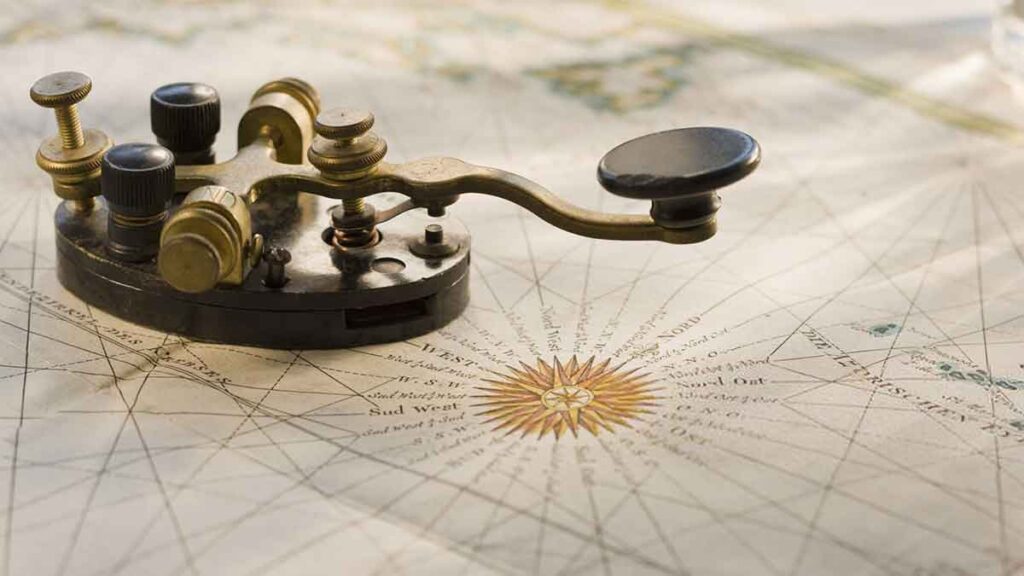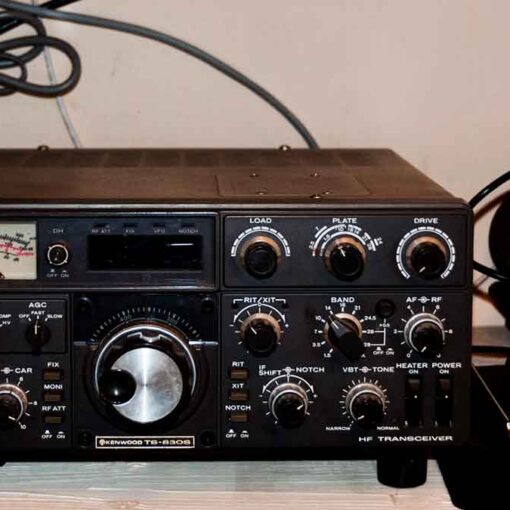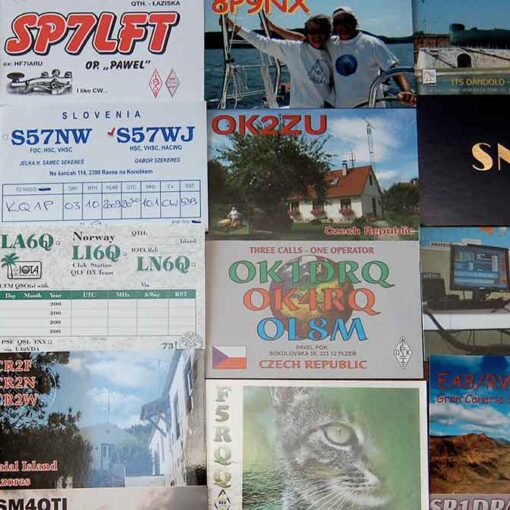
What should you do first?
Decide which scope you will use. What range has good mileage for the road you want to cover? The monthly MIC (Maximum Usable Frequency) tables published in magazines and on many sites can help you in this regard.
Check which parts of the range are reserved for CW operation and which are allowed in your country. On most scopes they are at the bottom of the scope. Consult the IARU band plan on the IARU website and national regulatory documents.
Listen for a while on the frequency you have chosen to use to check if it is clear or not.
And after this?
If the frequency appears clear, ask if it is not in use. Pass “QRL?” at least twice in a few seconds. Pass only “?” not proper procedure. Interrogative only means “I want to ask”; the problem is you don’t want to ask about anything.
“QRL?” (with a question mark) means “Is this frequency used?”.
Do not transmit “QRL K” as we sometimes hear. This will mean “is this frequency in use? I transfer to you”. Whom? Only “QRL?” is correct.
If the frequency is in use, someone will answer “R” (Yes, understood), “Y” (Yes), or “R QSY”, or “QRL”, “C” (Confirm), etc. It is natural, logical and ethical to look for another frequency.
If a pure frequency is found?
Call CQ. How?
Send CQs at the rate you want them answered. Never transmit faster than you can receive.
“CQ CQ LZ2ZZZ LZ2ZZZ LZ2ZZZ AR”.
“AR” stands for “End of line (for now)” or “I’m done with this show,” while “K” stands for “Go on, you are.” This means that you should always end your CQ with “AR”, never with “K”, because there is no one to give the transmission to yet.
Do not end your CQ with “AR K”: it will mean “I’m done with this show, give it to you”. There is no one to transfer the show to yet. End your CQ with “AR”. It is true that we often hear “AR K” on the scope, but this is not the correct procedure!
Using “PSE” at the end of CQ (eg “CQ CQ DE … PSE K”) may seem very polite, but it is not necessary. It has no additional value. And as an addition, the use of “K” is also incorrect. Just use “AR” at the end of your CQ.
Give your initial two to four times, definitely no more.
Do not transmit an endless series of CQs, but only your initial once at the end. If you think that a longer CQ increases your chances of getting a response, you are wrong. In reality, the effect is just the opposite. The station that might be interested in calling you wants to know your call sign first and certainly isn’t interested in listening to your endless string of CQ CQ CQ…
It is much better to transmit a few short CQs “CQ CQ de F9ZZZ F9ZZZ AR”) than a long carousel CQ CQ CQ CQ … -15 times-de F9ZZZ CQ CQ CQ … -15 more times- de F9ZZZ AR”).
If you are calling CQ and want to operate on spread frequencies (receive on a different frequency than you are transmitting on), mention your receive frequency on every QSO. Example: end your CQ with “UR 5/10…” or “UR 5…” or “QSX 1822…” (which means you’re listening on 1.822 kHz; “QSX” means “listening on. ..”).
Merged characters
Amalgamated characters (also called short or professional characters) are characters formed by combining two characters into one without a space between them.
“AR” used at the end of the transmission is a merged character.
Other commonly used fusion characters are:
- “AS”
- “CL”
- “SK”
- “HH”
“VK” (see below) and “KN” (see below) are not fused characters, as the two letters of these abbreviations are transmitted with a space between them.
Call CQ DX
Just transmit “CQ DX” instead of “CQ”. If you want to work DX from a specific area, call for example “CQ JA CQ JA I1ZZZ I1ZZZ JA AR” (call for stations from Japan), or “CQ NA CQ NA…” (call for stations from North America), etc. n. You can also make a CQ DX call excluding an area, for example if you don’t want to work with European stations: “CQ DX CQ DX I1ZZZ I1ZZZ DX NO EU AR”, but that will sound a bit aggressive.
You can also name a specific continent: NA = North America, SA=South America, AF=Africa, AS=Asia, EU=Europe, OC=Oceania.
Even if a station from your continent calls you, always be polite. Maybe he’s a beginner. Give him a quick report and log it. In fact, you may be a new country to him!
Call a specific station (direct call)
Let’s say you want to call DL0ZZZ with whom you have a sked. Here’s how you do it: “DLOZZZ DLOZZZ SKED DE LZ2ZZZ KN. Note the KN at the end, which means you only want the other station to call you.
If, regardless of the specific call, nowhoever else called you, give him a short report and hand him “SRI HVE SKED WID DL0ZZZ 73…”.



